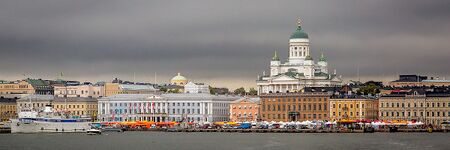Helsinki Finland
- Members
Helsinki is the capital, primate, and most populous city of Finland. Located on the shore of the Gulf of Finland, it is the seat of the region of Uusimaa in southern Finland, and has a population of 658,864. The city's urban area has a population of 1,268,296, making it by far the most populous urban area in Finland as well as the country's most important center for politics, education, finance, culture, and research; while Tampere in the Pirkanmaa region, located 179 kilometres (111 mi) to the north from Helsinki, is the second largest urban area in Finland. Helsinki is located 80 kilometres (50 mi) north of Tallinn, Estonia, 400 km (250 mi) east of Stockholm, Sweden, and 300 km (190 mi) west of Saint Petersburg, Russia. It has close historical ties with these three cities.
Activities

|
Lighting Infrastructure as a Service Platform | |
| Lighting infrastructure is centrally located in city, close to people and activities. It provides excellent opportunity to collect and deliver information and services beyond lighting. Project targets to employ lighting infrastructure as the IoT backbone for different services in urban environments. | ||

|
Piloting lighting infrastructure as a service platform for smart lighting solutions | |
| Lighting infrastructure is centrally located in city, close to people and activities. It provides excellent opportunity to collect and deliver information and services beyond lighting. Project targets to employ lighting infrastructure as the IoT backbone for different services in urban environments. | ||
Details
Together with the cities of Espoo, Vantaa, and Kauniainen (and surrounding commuter towns, including the eastern neighboring municipality of Sipoo), Helsinki forms the Greater Helsinki metropolitan area, which has a population of over 1.5 million. Often considered to be Finland's only metropolis, it is the world's northernmost metro area with over one million people as well as the northernmost capital of an EU member state. After Copenhagen and Stockholm, Helsinki is the third largest municipality in the Nordic countries. Finnish and Swedish are both official languages. The city is served by the international Helsinki Airport, located in the neighboring city of Vantaa, with frequent service to many destinations in Europe and Asia.
Helsinki was the World Design Capital for 2012, the venue for the 1952 Summer Olympics, and the host of the 52nd Eurovision Song Contest in 2007.
Helsinki has one of the world's highest standards of urban living. In 2011, the British magazine Monocle ranked Helsinki the world's most liveable city in its liveable cities index. In the Economist Intelligence Unit's 2016 liveability survey, Helsinki was ranked ninth among 140 cities. In July 2021, the American magazine Time ranked Helsinki one of the greatest places in the world in 2021 as a city that "can grow into a sprouting cultural nest in the future," and which has already been known in the world as an environmental pioneer. An international Cities of Choice survey conducted in 2021 by the consulting firm Boston Consulting Group and the BCG Henderson Institute raised Helsinki the third best city in the world to live, with London and New York City ranking the first and the second. Also, together with Rovaniemi in the Lapland region, Helsinki is one of Finland's most significant tourist cities in terms of foreign tourism.

